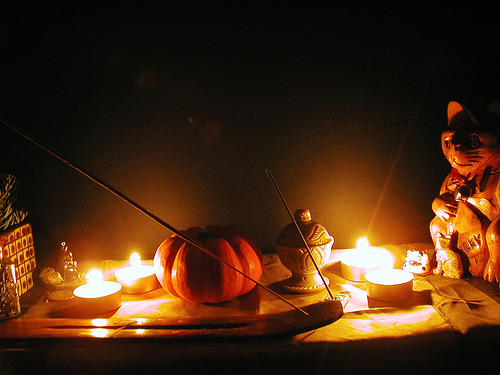
A few weeks ago I wrote about procrastination.
But what about times when you’re not so much procrastinating as you are unable to get in the flow with a creative project?
Here’s a question from a reader about one of those times. For you it may not be business competing with art. It could be housework (!), taking courses, or anything number of things competing with business.
“My problem is that it is always easier to do business than it is to get to the studio. I think it’s because what needs doing in the business is defined, and what needs doing in the studio is free fall.
“I know that what we decide to do is what gets done. If you can help me find ways to make the decision to make art smoother, I will be forever grateful.”
The mystery of creative blocks
Creative blocks are a bit mysterious. After all, if you’re a creative person, you want to create, right?
Right. But if you haven’t been creating for a while, or if you’ve finished a project and haven’t yet begun a new one, creative inertia can get in the way.
There’s a law of physics at work here (Newton’s Law of motion, to be precise):
- A body in motion tends to stay in motion.
- A body at rest tends to stay at rest.
Something similar applies to human behavior. You’re a lot more likely to continue doing something than to begin something. And even when you do begin, you may stop short because you haven’t gathered enough momentum to keep going.
So how do you get going and keep going when you’re faced with a blank canvas, a blank page, or a blank calendar?
The answer is 2.5 parts sacred and 2.5 parts mundane.
Part 1: Dedicate it
The reader who posed the question is right, you do what you decide to do. But how do you decide?
Often, your decisions are made by default. You do what’s right in front of you. What’s easiest or most urgent.
If something is neither easy nor urgent, it may never make it into your decision tree. Unless you make it sacred.
You make something sacred by dedicating it to a higher purpose. So decide what you will dedicate this project to. It could be to the well being of someone you love. It could be to whatever form of divinity you recognize. It could simply be to the creative principle itself.
When you dedicate a project, you naturally pay more attention and take greater care with it. It becomes a higher priority.
Part 2: Create a ritual
Create a ritual to signify your intent to enter the sacred creative space.
Your ritual could be as simple as walking into your work room and lighting a candle. It could be spending five minutes in meditation. It could be repeating the declaration that the work you are about to do is sacred and rededicating it.
The point of a ritual is to carry you through the transition from everyday life to your sacred work. When you perform your ritual, you move one step further in the creative process.
The two halves of Part 3: Prepare the space
Regardless of the kind of project you are wanting (but failing) to do, there is some kind of work space involved. It could be a studio, a desk, even your computer desktop. When you prepare the space you move another step into the creative process.
This step is half sacred and half mundane. The sacred aspect is the intention you bring to preparing the space. In that sense, preparing the space is a continuation of the ritual.
The second aspect of preparing the space is more mundane. It has to do with clearing the way for the work to take place. Getting your tools in order. Organizing your materials.
Caution: Be sure to move on to parts 4 and 5 or you can get stuck in preparing the space!
Part 4: Warm up
Rather than expecting yourself to go from blankness to full out creative expression, do a warm up. If your project involves writing, do a ten minute free write on any topic. If you can’t think of a topic, look around the room and write about the first thing to catch your eye.
Another great warmup for artists and non-artists alike is what my friend and colleague Jude Spacks calls a Field Trip. Essentially, you draw or color on a single sheet of paper for 10 minutes. If your drawing starts to look like something recognizable, change it up. Turn your paper upside down, add a new shape or color.
The purpose of a warmup is to get your creating synapses firing. It’s not about what you are producing, it’s about being in action.
Part 5: Use a timer
Warmups aren’t the only place where a timer is useful. If you’ve been having trouble starting to create, follow the steps above, then set a timer for 30 minutes. Commit to doing what you can in that time.
When your 30 minutes are up you will likely be sufficiently engaged to want to keep going. If not, step away from the project and go through the steps again later in the day or the following day.
You can put the body into motion
The trick to overcoming a creative block is not to fight it. It’s to surrender to the fact that you’ve stopped cold, then deliberately set the stage for motion with these five steps.

